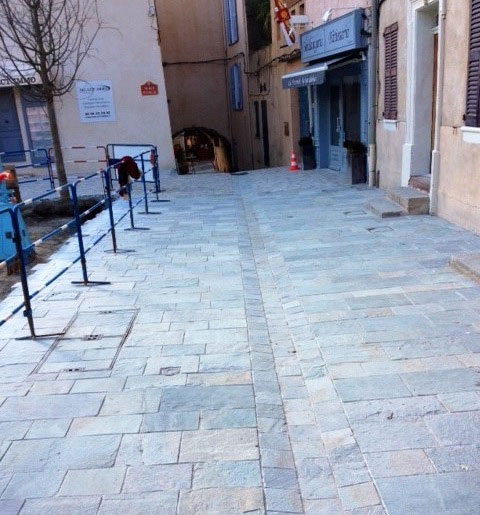1) Clean each piece of stone at the time of placement with water and sponge in order to remain clean without any slurry on the surface. This way the stones will remain crystal clear. The same process must be followed for all joints.
2) Each palette with squared or polygonal slates must be opened entirely so that the craftsman will be able to combine colours and sizes evenly.
3) The craftsman must be an experienced one and it is better that you have already seen samples of his work. A good craftsman can bring out the beauty of the stone as well as a beautiful stone can reveal the craftsman’s capabilities.
4) Inform your supplier where the stone slates will be used, indoor or outdoors.
This is an important information.
5) In spaces where heavy vehicles pass through, the minimum thickness of the stone should be at least 2 cm. This thickness guaranties the maximum durability of the natural product.
6) For the insulation of roofs or balconies using karystos slates, in order to avoid the humidity passing through the joints, you should use the special putty for the particular case (waterproof).
7) Pay great attention during and after the coating process so as the slates will not scratch.
8) For the coating and then for the joints of the slates must be used quarry sand rather than sea sand.
9) The mounting of the slates requires that the ground floor has at least 8-10 cm of cement coating. This is not necessary if the slates have a thickness of 4-5 cm and above.
10) For a better result when placing polygonal slates the craftsman can use a small hammer hewing the plates so that the dimension of the joint is uniform at 1 cm.
[justified_image_grid id=3333]







